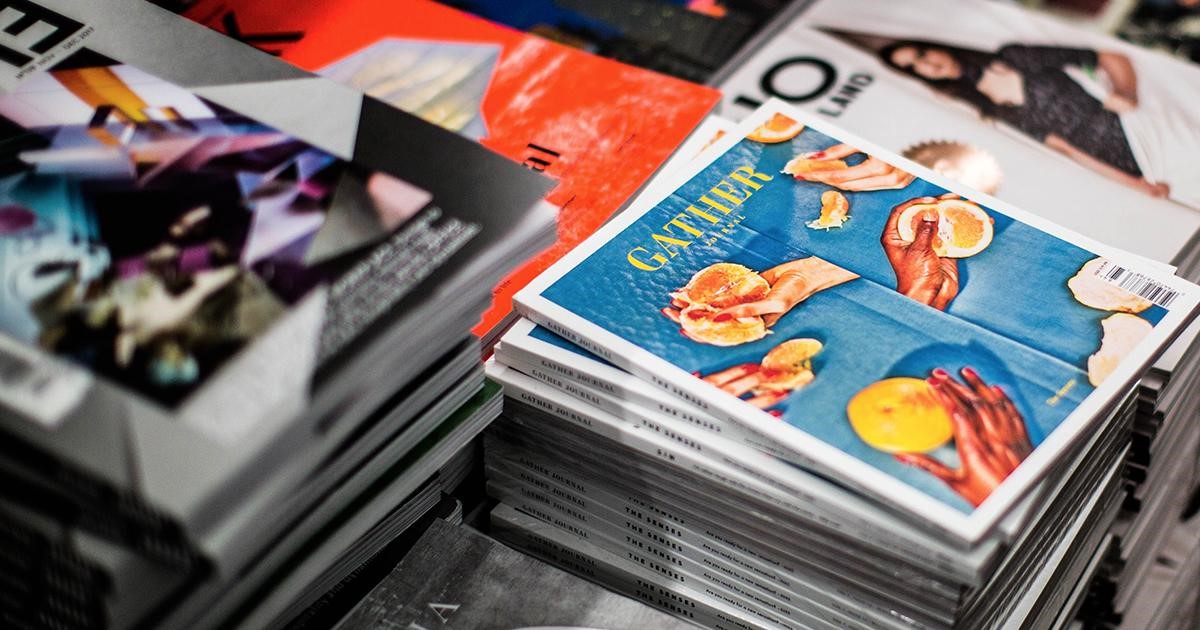Catalogs are simple enough in their purpose: They exist to catalog a
company’s inventory and offer prices and a point of purchase for customers.
But goodcatalogs
are much more than that. The best and most effective catalogs will market
products, encourage purchases and communicate to customers the level of
quality they can associate with the business the catalog represents. A
catalog’s ability to do these things hinges on the quality of its design.
This guide will demonstrate how to create a catalog design that does just
that.

The Basics
As with all marketing pieces, the goal of a catalog’s design should be to
communicate its information while also enticing customers with pleasing
imagery, layout and language. Good booklet design will feature strong,
attractive images of products at the appropriate resolution surrounded by
smaller satellite images and bodies of copy for describing products and
their prices. As with all designs, designers should seek balance between
large, dominant images, smaller images and text.
When designing a catalog, remember that a catalog offers enough space for
designers to use fleshed-out, descriptive bodies of copy and large images.
The space should be utilized to better facilitate sales through product
description.
Designs, as always, should be catered towards the audience that will view
them. Know your customer base and adjust your designs accordingly.
Technical Details
Remember that booklet pages are printed as four pages per sheet and then
folded to form the pages of the catalog, so designers should layout pages
accordingly. A program like Adobe InDesign is the best choice for laying out
catalog pages. Adding page numbers to the design is helpful for both your
graphic artist creating the catalog as well as your readers who are trying
to navigate through sections and search for specific product pages.
Each catalog page should be designed as the final trim size of the piece.
For example, if you’re creating the standard 8.5” x 11” booklet, then each
page size will be set to 8.5” wide by 11” tall.
If you want your artwork to bleed off the edges, then be sure to add at
least .125” bleeds and keep important elements within .125” margins.
Using the highest-quality images is important yet often overlooked, and even
the best quality printing cannot overcome poor resolution, dark images. For
the best quality--and results for your catalogs--we recommend 300 PPI for
all graphics. If an image appears dark or “muddy” on your computer screen,
consider swapping it out for something that is brighter and more vibrant.
And remember: all graphics and colors need to be produced in CMYK mode, not
RGB.
Think about the Binding Style
For most catalogs, they are either bound through saddle-stitching or perfect
binding. Saddle-stitching is most commonly used for smaller booklets under
96 pages, while perfect binding is typically used for catalogs over 40
pages. However, as long as certain page minimums and maximums are met, then
print buyers have the choice to decide how they would like the spine to be
bound. Saddle-stitching is typically more cost effective, but requires
staples to be inserted into the spine. Perfect bound books are created by
gluing the pages and the cover at the spine with a flexible thermal glue.
Perfect bound books thus tend to have a more elegant, professional
appearance and can give your catalog a luxurious feel.
Images Are Everything
Booklets and catalogs are highly visual marketing tools and should be
designed as such. Expertly produced graphics and photographs should be used
to break up sections of text and draw the eyes to a page. If you don’t have
the resources to hire a professional photographer, consider hiring a college
student majoring in photography to photograph your products. Or, if your
services are more general, try to find high quality stock photos from
istockphoto.com.
Keep Typography Consistent
With lengthy catalogs, it’s tempting to use various fonts throughout the
design; however, continuity in typography is key and gives your booklet a
more professional, branded appearance. While some variety is encouraged, try
to stick to only 2-3 main fonts that can be used throughout the catalog. For
example, you could use a sans serif font for headlines and serif font for
all body text.
The Importance of Continuity
Speaking of consistency with typography, it’s important to keep the entire
catalog consistent with its overall design. Again, some variety will keep
readers engaged, but overall, it should look as the pages flow together
seamlessly. Having one main photographer who produces all photographs and
one main graphic designer to layout pages and graphics will keep the style
of the catalog consistent.
Include White Space
Although often neglected, white space is critical in catalog design. White
space (also known as negative space) is the area between the different
design elements. White space allows for breathing room in your design and
can help emphasize certain products as it draws the eyes to what is most
important on a page. White space adds balance to design and prevents readers
from feeling overwhelmed with information or graphics.
Check the Results
After your catalog has been printed and sent out to customers, it’s crucial
to check how effective the design was. Taking note of which products sell
from the catalog the most or least or which features of the catalog draw a
visible response from customers will serve as indication for the catalog’s
effectiveness overall. And if you’ve included any type of coupons or
discount codes, you can easily measure the success of certain product sales
over others. It’s always important to review any marketing piece’s
effectiveness to make changes and tweaks going forward.
Count on Quality Printing
Finally, designers should put their designs in the hands of experienced,
proven printers. U.S. Press has the experience and the desire to make your
designs come to life on quality paper. Your U.S. Press account manager is
always standing by with answers to your questions about design, layout or
the printing process.